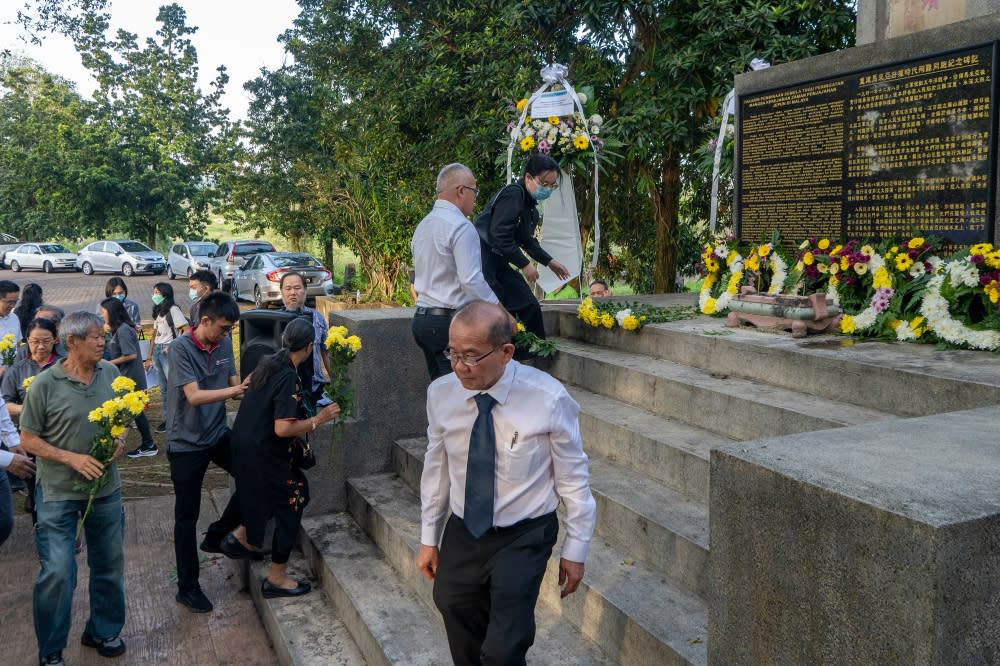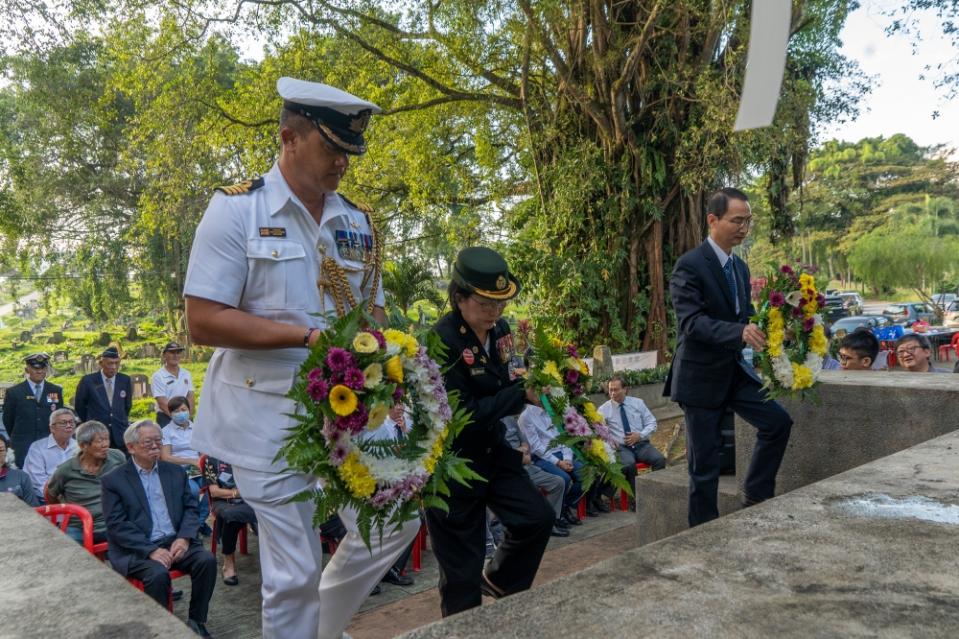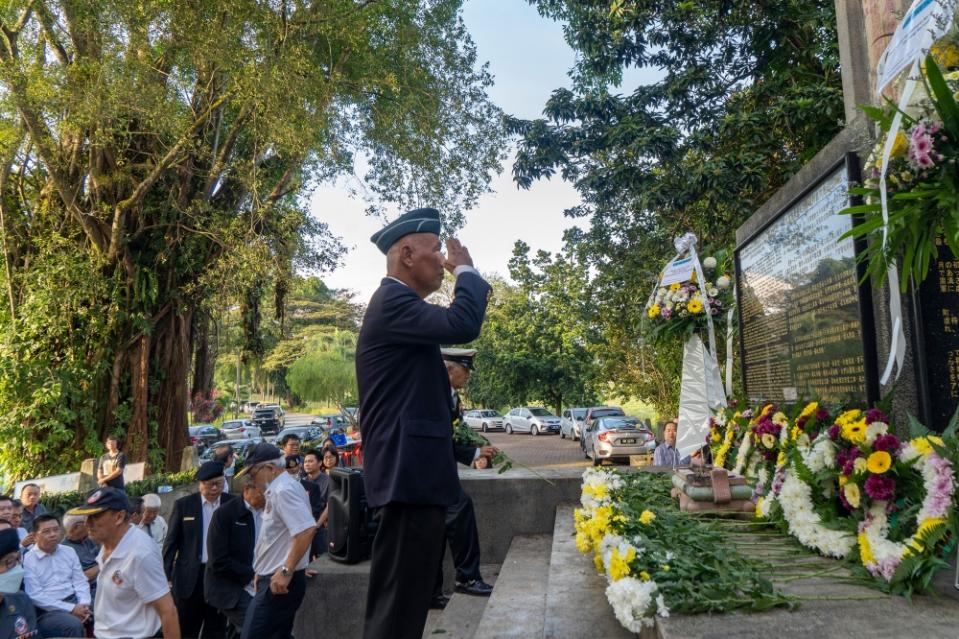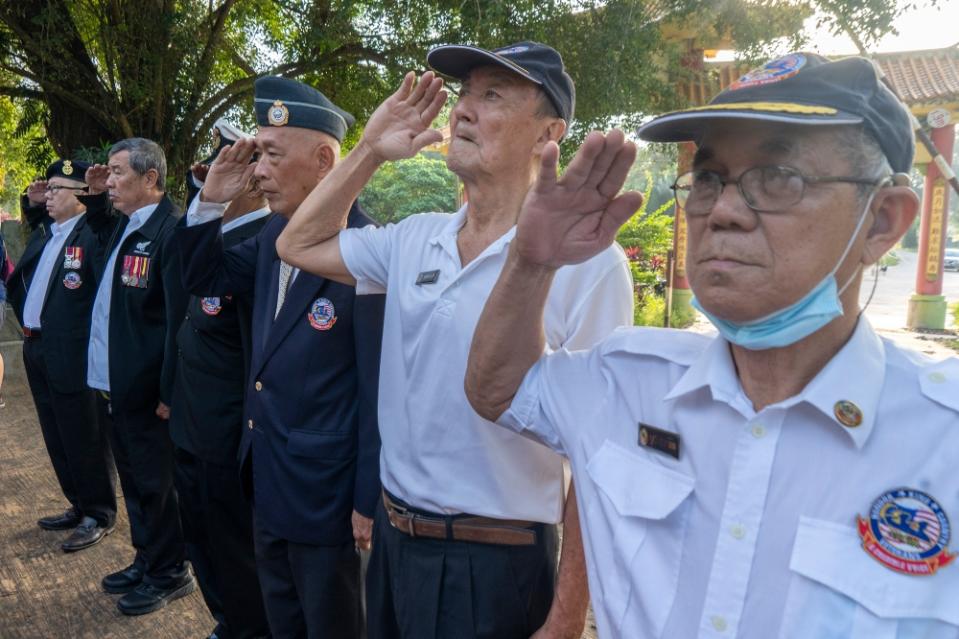‘Fall of KL’: Military vets, history buffs remember those who lost lives during WWII’s Japanese occupation of Malaya

KUALA LUMPUR, Jan 15 — Situated along Jalan Kerayong which traverses the Hokkien compound of the Kwong Tong Cemetery in the capital here, lies a broken monument that was originally erected in 1946 — slightly after Axis forces surrendered in 1945 that marked the end of the World War II.
Erected by an anonymous individual, the stone pillar on top of eight steps of stairs was built in remembrance of thousands who lost their lives during the Japanese occupation of Malaya.
According to the Kuala Lumpur and Selangor Chinese Assembly Hall’s (KLSCAH) Malaysia World War II History Society, this monument was previously lost to history — leading the group to erect a new monument to replace it.
“However, years later, we stumbled upon the lost monument, leading to the reinstatement of the original memorial in 1995,” its chairman Lee Ying Wai told Malay Mail yesterday.
These days, the monument plays host to an annual Kuala Lumpur Remembrance Day to remember “the fall” of the capital city to Japanese forces on January 11, 1942 — started by several Chinese groups in 1995.
George Yong, another representative from the group, said the monument was already broken even before the Remembrance Day tradition began.
“In the Chinese tradition, when a new one is built or refurbished, we need to break the old one. So, we got rid of the new one and used the broken one as it is,” he said.

People pay their respects during the 1.11 KL Remembrance Sunday commemorating The Fall of KL at KL Hokkien Cemetery in Kuala Lumpur January 14, 2024. — Picture by Shafwan Zaidon
Gone but not forgotten
Kwong Tong Cemetery is in a hilly area of Sungai Besi at the inner fringe of KL, bordered by Bandar Malaysia which was formerly the Sungai Besi Airport, the Seputeh housing area, and the compound of the old Istana Negara.
Founded in 1895, among other luminaries whose remains were buried here were kapitans Yap Ah Loy and Yap Kwan Seng.
Yesterday morning, dozens of local military veterans in full dress uniforms and representatives of KLSCAH, the cemetery, the British High Commission and the Chinese Embassy paid tribute to fallen civilians and British, Australian, New Zealand and Indian soldiers who lost their lives during the Japanese occupation.
It has been held every year since 1995, except for three years during the Covid-19 pandemic.
During the ceremony, military veterans paid homage with a rendition of Last Post, the British bugle call usually played during Commonwealth military funerals or ceremonies commemorating those who have died in war.
It then ended with the laying of wreaths and stalks of white and yellow chrysanthemums at the base of the memorial tomb by representatives and veterans. “Gone but not forgotten” seems to be the mood that coloured the sombre event.

The Kwong Tong Cemetery is in a hilly area of Sungai Besi at the inner fringe of KL, bordered by Bandar Malaysia which was formerly the Sungai Besi Airport, the Seputeh housing area, and the compound of the old Istana Negara. — Picture by Shafwan Zaidon
Vigilant against the horrors of war
The ceremony also shed light on some overlooked aspects of the Pacific War, such as the early morning assault on Kota Baru, Kelantan, on December 8, 1941, which marked the invasion of Japanese forces into Malaya.
“Unlike the well-documented battles between Japanese and American forces, the Malayan battle often remains neglected.
“From 1998 to 1999, the research committee’s predecessors excavated the tragic graves uncovering a damaged memorial erected in January 1946, and over 800 sets of remains,” said Lee.

Dozens of local military veterans in full dress uniforms and representatives of KLSCAH, the cemetery, the British High Commission and the Chinese Embassy paid tribute to fallen civilians and British, Australian, New Zealand and Indian soldiers who lost their lives during the Japanese occupation. — Picture by Shafwan Zaidon
He said these remains served as crucial evidence of Japanese military atrocities against civilians, emphasising the need to denounce war’s brutality and guard against militarism.
Lee added that the first three months of Japanese occupation marked a grim period, capturing around 3,000 people, with over a thousand losing their lives.
“The remains of 800 individuals, discovered by calculating thigh bones, now rest inside a vase in a room beneath the memorial tomb, serving as a significant reminder of the atrocities committed,” he said.
The group announced yesterday that the KL Remembrance Sunday will now be held on the second Sunday of January starting next year.



